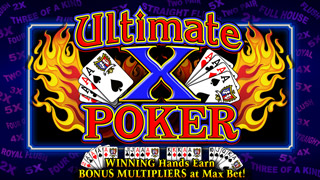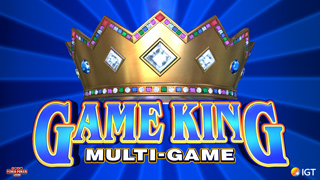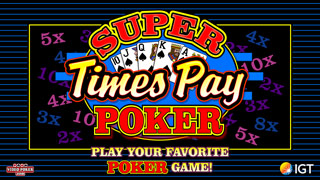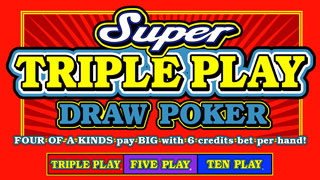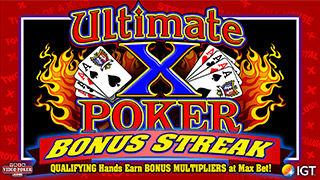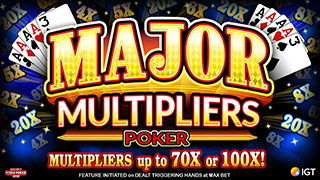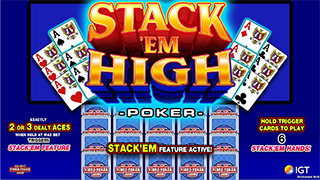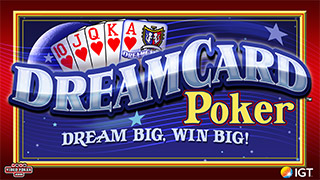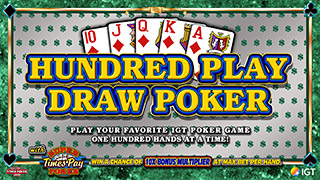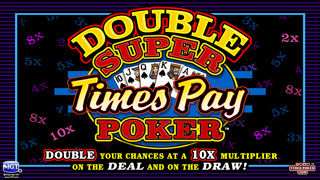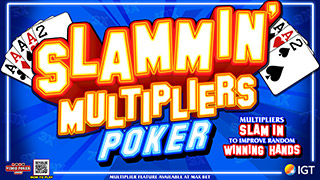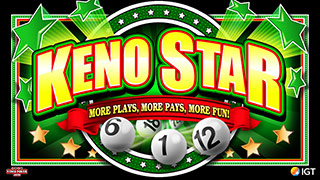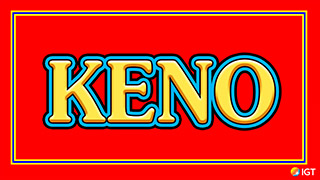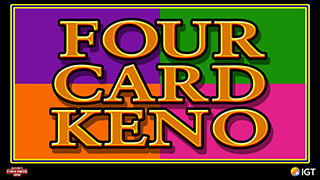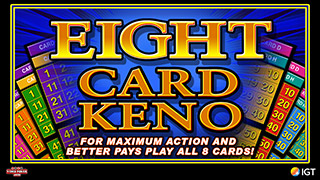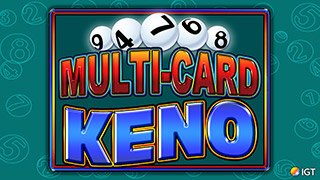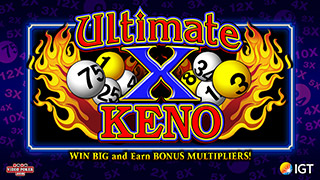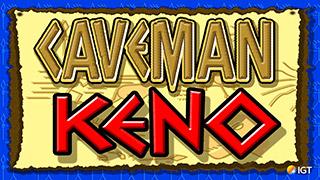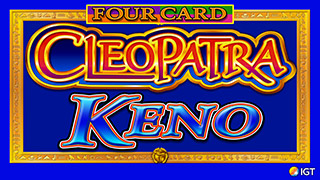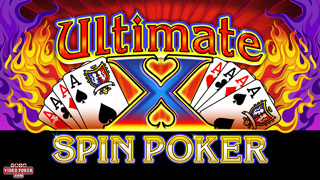An open offer to Fa La La La La.... La la la la
-
New2vp
- Video Poker Master
- Posts: 1878
- Joined: Mon Sep 11, 2006 4:02 am
Re: An open offer to Fa La La La La.... La la la la
Webman, an hour (or at most 3) is plenty of time to get fairly conclusive results on this. I've been amused by Rob's reports that he has a sample of 3500 observations and that he is only 2/3 done. The numbers that he has reported are much, much more than sufficient to prove his point...if they have been accurately and truthfully recorded. He has suggested that his empirical results are nearly 8 times the expected rate of around 6%, meaning that he is claiming to have seen more than 1500 flipovers in 3500 tries.The probability of getting 1500 flipovers in 3500 tries (43%) if the true rate is 3/47 is so small that my software cannot recognize any difference between it and zero. Even if he saw 500 flipovers in 3500 tries, that would occur less than 1 time in 8 x 10^61 similar experiments; basically it won't happen. I must say no to the Dumb and Dumber fans; you don't have a chance. Thus if we did observe such numbers, we could safely conclude that the draws in this case were not in accordance with regulations. Of course, we then also have to conclude that the video poker software programmers aren't too bright, since there are a lot of more sophisticated ways to cheat the players that could not be detected so easily.But getting back to your experiment, let's use Shadowman's cited example of 800 hands. Let's say you are playing close-to-perfect basic Jacks or Better 9/6 strategy (it really doesn't have to be that close to perfect) and you count all your draws from 2 pairs, 4 flushes and the 4 straights that you would play. Out of the 2,598,960 possible draws, you will have 123,552 situations with 2 pairs, 85,512 with a 4 flush, 53328 from 5432-QJT9, 5304 from AKQJ, and 11400 from KQJ9,AQJT,AKJT, or AKQT, making 279,096 in all. This occurs on 10.74% of all hands. (I left out 5964 KQJT hands because sometimes you might draw to KQJT when dealt KQJTT, with the odds of a flipover T of only 2/47; if you were to include these, I'm certain the numbers would not be significantly different enough to affect conclusions. You would get even more opportunities if you drew to other inside straights with fewer than 3 high cards in a game where 2 pair pays only 1 for 1).With a sample of 800 deals, 99.9% of the time you will get somewhere between 59 to 116 chances, inclusively, at a 1-card draw to 2 pairs, a 4-flush, or qualifying 4-straights.A scientist would lay out the experiment before it happened. You could conclude with 99.9% confidence that the probability of a flip-over was higher than 3/47 if you made the following observations, depending on the number of 1-card draws that you get. 1-card draws observed flipovers 59 - 66 11 or more 67 - 76 12 or more 77 - 85 13 or more 86 - 94 14 or more 95 - 104 15 or more 105 - 114 16 or more 115 - 116 17 or moreBasically we cannot know beforehand how many opportunities we will have, but if we see, say, 87 opportunities and 14 or more of them were in fact flipovers, we could reject a hypothesis that the true flipover rate was 3/47 with less than 1 chance out of a thousand that we were wrong.On the other hand, if the underlying flipover rate was 40%, which would be more consistent with Rob's reported results, we should have no problem far exceeding the critical values listed in the table above. In every case listed, we would see numbers at least as large in the table more than 2499 times out of 2500 and in most cases significantly more often.Conclusion, one or two hours is plenty of time to put this to rest if we can trust that the results are accurately and truthfully recorded. And if your numbers do not fit exactly with what is in the table that I have provided, I can show you exactly how I calculated the table and easily use Excel to calculate new numbers to match the number of observations that you actually had in your experiment.By the way, I did see in another forum that columnist John Grochowski (who posts under the name Answerman) has planned to write a column on this. He has reported that he has 23 volunteers who have already recorded 2000 observations. Again, he doesn't really need that many, but he is trying to replicate what Rob has done. I guess that's easier for most than working out how many observations are necessary to prove a point with a given level of confidence. He didn't ask for my consultation in formulating his experiment, but I suppose most would rather see more replications than be content that probability theory can work quite well in this case with many fewer observations.
-
cddenver
- Video Poker Master
- Posts: 2269
- Joined: Tue Mar 13, 2007 9:54 pm
(sigh)
Like honey to a bee, I tells ya.
Hey, it's our fave topic and it's a slow night.
Mr Fa La La La La.... La la la la has officially accepted the offer. I look forward to sharing the results with all of you in June.
Gee, just think - you'll put that one to bed once and for all. No pressure.
Like honey to a bee, I tells ya.
Hey, it's our fave topic and it's a slow night.
Mr Fa La La La La.... La la la la has officially accepted the offer. I look forward to sharing the results with all of you in June.
Gee, just think - you'll put that one to bed once and for all. No pressure.
-
pokeherguy
- Senior Member
- Posts: 413
- Joined: Thu Feb 22, 2007 10:27 pm
This should be interesting. I gotta say this or I wouldn't be who I am. Having played video poker for many years and never really knew how the vp machines worked, didn't care. I played video poker because I was smart enough to see it was better than playing slots. I never really got interested in any of the finer parts of the game until a couple of years ago when I started to play at another location. There were some things that did seem odd and one just happened to concern 4-cards to the flush off the deal. I was getting so many of these flush draws that I probably would have been better off tossing the whole mess away. It was almost predictible, if I threw away a 7-spade I got back a 7-heart. Whether it was bad luck, bad cards or whatever it did cause me to question the game.
-
cddenver
- Video Poker Master
- Posts: 2269
- Joined: Tue Mar 13, 2007 9:54 pm
Thanks for the post and the obvious time and effort that went into it!
Of course, we then also have to conclude that the video poker software programmers aren't too bright, since there are a lot of more sophisticated ways to cheat the players that could not be detected so easily.
I think it was pianoman who gave us a bit of a hard time for calling this particular type of rigging "unsophisticated". I think the only LESS sophisticated types of rigging would involve dropped cards actually coming up again on the draw. It also isn't possible that many different casino owners/managers would independently decide on the same type of rigging, down to the same "flip" percent.
He has reported that he has 23 volunteers who have already recorded 2000 observations. Again, he doesn't really need that many, but he is trying to replicate what Rob has done. I guess that's easier for most than working out how many observations are necessary to prove a point with a given level of confidence. He didn't ask for my consultation in formulating his experiment, but I suppose most would rather see more replications than be content that probability theory can work quite well in this case with many fewer observations.
I certainly trust the math when it comes from people like yourself or SM, but when I try it myself in my own sims I also play out the numbers so that I know I'm doing the math right - I get a warm and fuzzy feeling by seeing life imitate art.
Of course, we then also have to conclude that the video poker software programmers aren't too bright, since there are a lot of more sophisticated ways to cheat the players that could not be detected so easily.
I think it was pianoman who gave us a bit of a hard time for calling this particular type of rigging "unsophisticated". I think the only LESS sophisticated types of rigging would involve dropped cards actually coming up again on the draw. It also isn't possible that many different casino owners/managers would independently decide on the same type of rigging, down to the same "flip" percent.
He has reported that he has 23 volunteers who have already recorded 2000 observations. Again, he doesn't really need that many, but he is trying to replicate what Rob has done. I guess that's easier for most than working out how many observations are necessary to prove a point with a given level of confidence. He didn't ask for my consultation in formulating his experiment, but I suppose most would rather see more replications than be content that probability theory can work quite well in this case with many fewer observations.
I certainly trust the math when it comes from people like yourself or SM, but when I try it myself in my own sims I also play out the numbers so that I know I'm doing the math right - I get a warm and fuzzy feeling by seeing life imitate art.
-
Webman
- Video Poker Master
- Posts: 5213
- Joined: Wed Jul 13, 2005 5:00 pm
New2vp, thank you for the numbers. I was hoping someone would do a good analysis such as that.It's good to hear that other studies are being done on this subject. As has been noted, there isn't anything stopping anyone from doing such a test on their own at any time. I look forward to any and all such results.The one added benefit (and main point) of this test is that we will be validating and signing off on one another's results. It should be interesting.
-
New2vp
- Video Poker Master
- Posts: 1878
- Joined: Mon Sep 11, 2006 4:02 am
I certainly trust the math when it comes from people like yourself or SM, but when I try it myself in my own sims I also play out the numbers so that I know I'm doing the math right - I get a warm and fuzzy feeling by seeing life imitate art.Nothing wrong with that and a lot right with it!No one's math should be trusted implicitly; anyone can make mistakes from time to time, but that does not invalidate the math or other science behind a theory. That is one of math's beauties. Problems can be attacked from many different avenues. I have often used simulations to study a problem for which I either wasn't able to compute theoretical results or wasn't 100% sure of my calculations. We also often learn new things when doing it ourselves.There is always something else to learn even if you think you know more math than 99% of the people who think "they know more math than 99% of the population." What does that claim mean anyway in a single problem when there is still that 1% (or 1% of 1%) chance of getting it wrong?
-
New2vp
- Video Poker Master
- Posts: 1878
- Joined: Mon Sep 11, 2006 4:02 am
The one added benefit (and main point) of this test is that we will be validating and signing off on one another's results. It should be interesting.
Agreed that any results will be of some note. I also applaud your unique approach to this. Looking forward to the results.
-
damule
- VP Veteran
- Posts: 551
- Joined: Wed Jul 09, 2008 4:59 pm
This should be interesting. I gotta say this or I wouldn't be who I am. Having played video poker for many years and never really knew how the vp machines worked, didn't care. I played video poker because I was smart enough to see it was better than playing slots. I never really got interested in any of the finer parts of the game until a couple of years ago when I started to play at another location. There were some things that did seem odd and one just happened to concern 4-cards to the flush off the deal. I was getting so many of these flush draws that I probably would have been better off tossing the whole mess away. It was almost predictible, if I threw away a 7-spade I got back a 7-heart. Whether it was bad luck, bad cards or whatever it did cause me to question the game.
The issue I have here is if you have 4 to a flush and throw away a 7s and get a 7h wouldn't that complete a flush 66.67% of the time? So although the same value card may be flipped over, one would still have a winning draw here.
-
New2vp
- Video Poker Master
- Posts: 1878
- Joined: Mon Sep 11, 2006 4:02 am
The issue I have here is if you have 4 to a flush and throw away a 7s and get a 7h wouldn't that complete a flush 66.67% of the time? So although the same value card may be flipped over, one would still having a winning draw here. Good point, the probability of a non-winning flipover with a 4-flush is only 2 out of 47 as opposed to the 3/47 value when confronted with 2 pairs or a 4-straight.
-
pokeherguy
- Senior Member
- Posts: 413
- Joined: Thu Feb 22, 2007 10:27 pm
{The issue I have here is if you have 4 to a flush and throw away a 7s and get a 7h wouldn't that complete a flush 66.67% of the time? So although the same value card may be flipped over, one would still have a winning draw here. }
You can't argue with the math but what do you do when the numbers don't add up? In my case trusting the math became a costly venture.
You can't argue with the math but what do you do when the numbers don't add up? In my case trusting the math became a costly venture.



